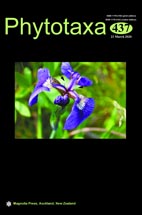Abstract
The systematic position of Veratrum has been controversial for many years. The purpose of the present research is to study embryological features and the systematic position of Veratrum in detail. Microsporogenesis, megasporogenesis, development of male and female gametophyte and changes of anther wall structure during pollen development of V. grandiflorum and V. nigrum were studied using conventional paraffin sectioning technique and light microscopy for the first time, and pollen morphology of V. grandiflorum with scanning electron microscopy was investigated. The results showed that 1) cytokinesis of both V. grandiflorum and V. nigrum microsporocytes is of the successive type; 2) microspore tetrads are either tetragonal or tetrahedral; 3) mature pollen grains are two-celled with wide-elliptic morphology, round ends at the polar view, a monosulcate colpus and reticulate surface ornamentation; 4) ovaries have axile placenta with three locules, each of which has multiple campylotropous, bitegmic, crassinucellate ovules with micropyle formed by the inner integument; and 5) their female gametophyte is of the Allium-type. Overall, these results support classification of Veratrum in Melanthiaceae (Liliales).

